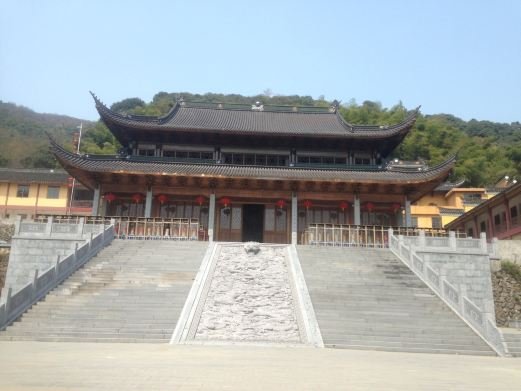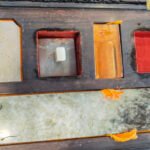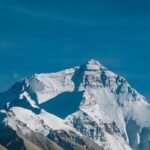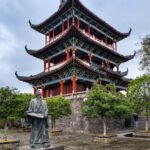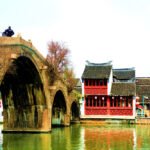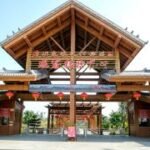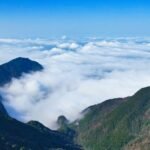‘Under the Baiyun Peak is the Brahman palace. The slanting sunlight shines on the palace wall, a touch of red. The white clouds in sight are all lovely. I want to take half of them and put them in my pocket.’ This is the poem Ode to ‘Baiyun Temple’ written by Chen Youpeng, a poet in the Qing Dynasty. It describes the Baiyun Temple on Baiyun Mountain, which is now 20.5 kilometers away from Ningbo and 380 meters above sea level. To the south is Hengxi Town, and to the north belongs to Chengyang Village in Dongqian Lake Tourism Resort. Baiyun Temple was founded in the first year of the initial era of the Western Han Dynasty (8 AD). Mei Fu, the magistrate of Nanchang, Jiujiang, resented Wang Mang’s usurpation of power, resigned from his official position and abandoned his family and came here. He built a thatched hut in the mountains and practiced Taoism. He is the first ancestor who opened Baiyun Temple and is respected as ‘the Patriarch of Baiyun’. By the fifth year of Qiande in the Northern Song Dynasty (967), the temple covered an area of 12 mu. There were 99 houses and halls. There was a mountain and more than 380 mu of fields. There was once the glory of a thousand monks having meals in the hall. Especially in the fourth year of Jingding in the Southern Song Dynasty (1262), after the famous monk Wuxue Zuyuan from Hengxi lived in major temples such as Jingci Temple, Lingyin Temple, Jingshan Temple, Yuwang Temple and Daci Temple in Hangzhou, he was invited by the county magistrate Luo Jizhuang to preside over Baiyun Temple for seven years. After that, Wuxue Zuyuan lived in Tiantong Temple and Nengren Temple in Taizhou. In 1276, he became the chief monk of Tiantong Temple. Three years later, at the invitation of the Japanese shogunate, he led his disciples to spread Buddhism in Japan and was respected as the National Teacher of Buddha’s Light. He presided over Kenchoji Temple in Kamakura, Japan. Three years later, he founded Engakuji Temple and became one of the twenty-four sects of ancient Zen in Japan, with 209 subordinate temples. In the second year of Zhiyuan in the Yuan Dynasty (1309), another famous monk Dongming Huiri from Baiyun Temple was invited to cross the sea to the east and spread the Caodong Sect in Japan. He became the tenth abbot of Engakuji Temple. He built a Baiyun Nunnery in the temple, which has been preserved until now. The specific opening hours and business status are subject to the opening situation on that day.
